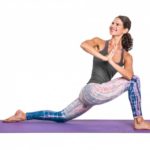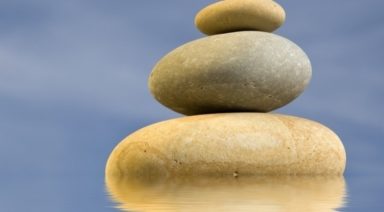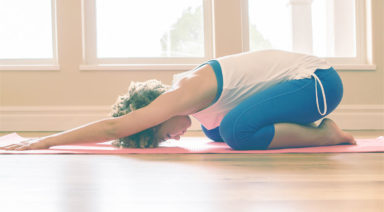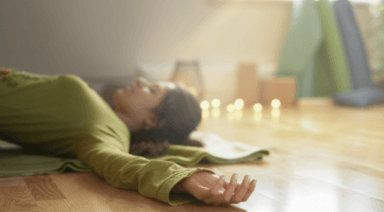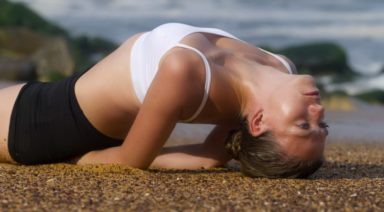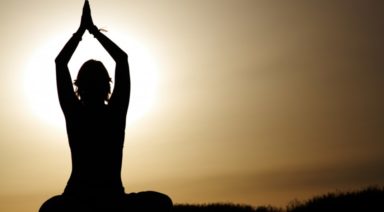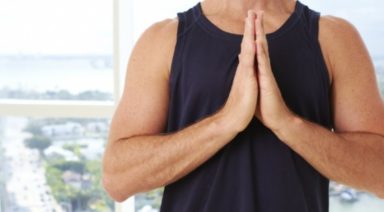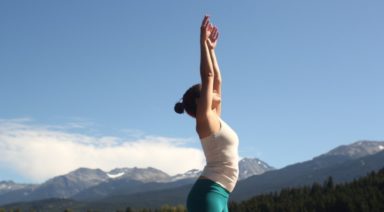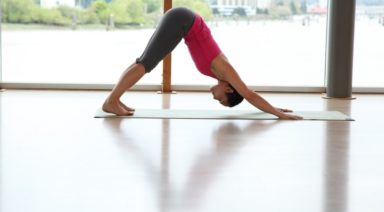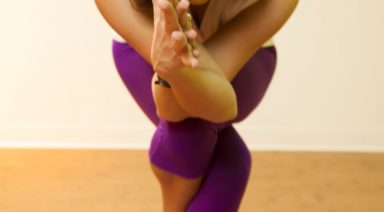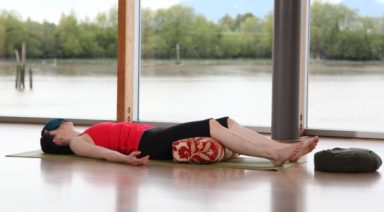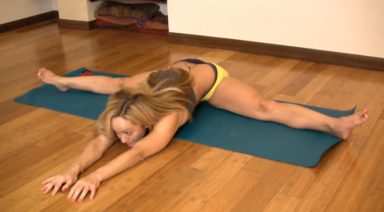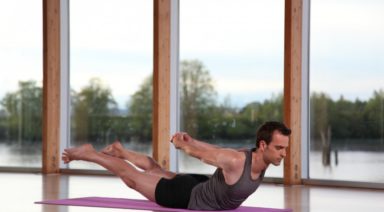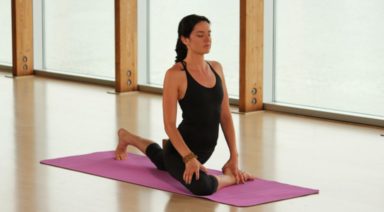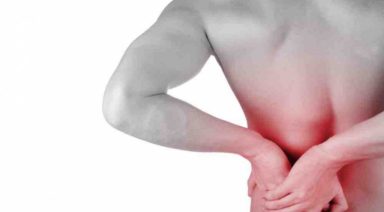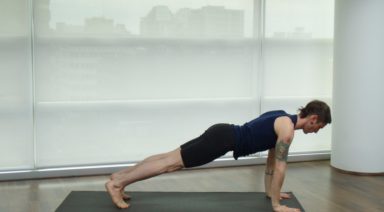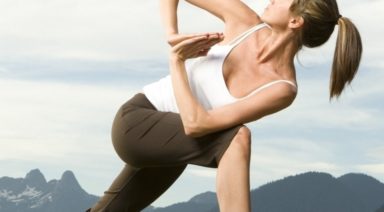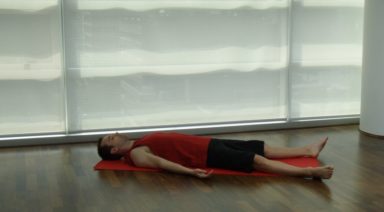Setu Bandhasana: Bridge Pose
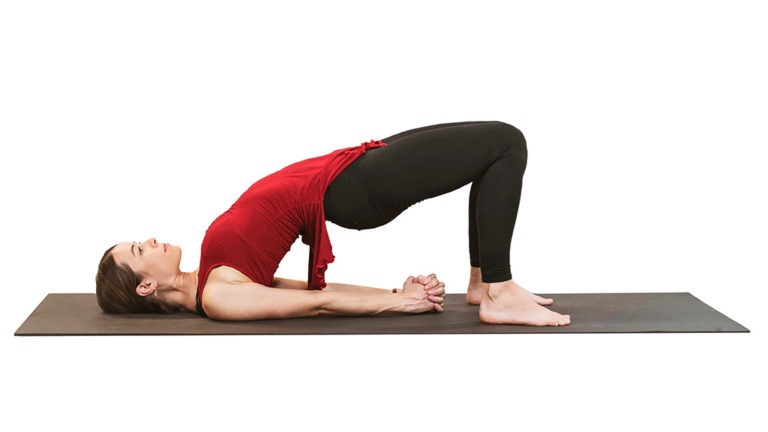
ADJUSTMENTS | BENEFITS | SEQUENCING | SANSKRIT | STEPS
Setu bandhasana (SET-too bahn-DAH-sa-na) provides a great stretch for the chest, hip flexors, and spine. Practice this pose to strengthen your legs and glutes or as a gentle inversion to calm your mind.
Philosophy + Origin
Like some other yoga poses, the name for bridge pose comes from its physical shape. The bridge pose is also a reminder of the opportunity to cross over from one place to another. The bridge is a connection between two different places, which can be physical, spiritual, or psychological. By forming a bridge with your body, you create a structure that invites transformation, one that can get you from where you are to where you want to be.
ADJUSTMENTS/MODIFICATIONS:
- For an additional shoulder stretch, interlace your fingers underneath your hips.
- Place a bolster or block under your pelvis for a more restorative version.
- Fold a blanket and place it under your shoulders for extra cushion.
STEP-BY-STEP:
- Begin lying on your back with knees bent, soles of your feet on the ground and knees to the ceiling. Place your feet parallel to each other with heels right under your knees.
- Place your arms by your sides, palms face down.
- On an exhale, press your feet firmly into the ground. Lift your tailbone off the ground, then lower back, then mid back.
- Press your knees forward, away from your hips.
- Lift your chest toward your chin, and your chin away from your chest.
- Keep your thighs parallel, gently hugging the inner knees toward each other.
- Hold for up to one minute. To release, gently lower your hips back down to the ground.
PREPARATORY POSES:
- Cobra pose | Bhujangasana
- Upward-facing dog | Urdhva mukha svanasana
SEQUENTIAL POSES:
- Fish pose | Matsyendrasana
- Upward-facing bow pose | Urdhva dhanurasana
COUNTER POSES:
- Happy baby pose | Ananda balasana
- Reclined bound angle pose | Supta baddha konasana
SANSKRIT:
- Setu = bridge
- Bandha = lock
- Asana = pose
PHYSICAL BENEFITS:
- Stretches your chest, spine, and hips.
- Strengthens your back, glutes, and hamstrings.
- Rejuvenates tired legs.
ENERGETIC BENEFITS:
- Calms your brain and soothes your central nervous system.
- Reduces stress and anxiety.
- Encourages transformation.
Legal Disclaimer Before participating in any exercise program or using any fitness products or services that may be described and/or made accessible in or through the Gaia Website and/or the Services, you should consult with a physician or other healthcare provider. Read more about Gaia’s Terms Of Use.
Ardha Uttanasana: Half Standing Forward Bend
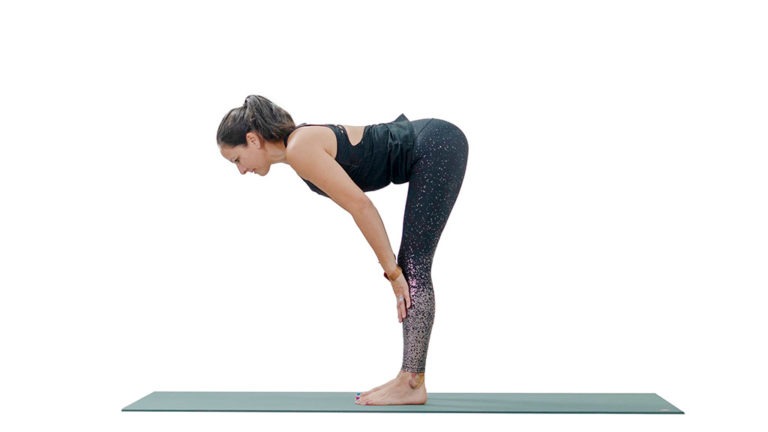
ADJUSTMENTS | BENEFITS | SEQUENCING | SANSKRIT | STEPS
An effective stretch for your hamstrings and calves ardha uttanasana (ARE-dah OOT-tan-AHS-anna), is often used during vinyasa sequences to connect the breath as you flow from one posture to the next.
Philosophy + Origin
One of the reasons ardha uttanasana is used so much in vinyasa yoga classes is that it positions the body for chaturanga dandasana. Because it engages the navel and core, it’s a powerful pose for warming up the body, which is why it’s included in warm-up sequences. Despite its sometimes transitory nature, the pose also engages the navel chakra (manipura), which can bring the practitioner increased confidence and willpower.





